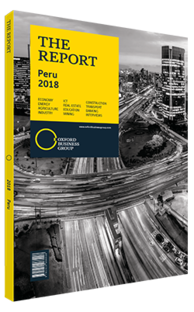Rafael Muente Schwarz, President, OSIPTEL : Interview

Rafael Muente Schwarz : Interview
What are the challenges to Peru achieving 100% coverage, and what steps are being taken?
RAFAEL MUENTE SCHWARZ: When analysing gaps in Peruvian coverage, there are three main aspects that explain the difficulty in reaching 100% coverage of all populated centres. First, Peru’s Andean mountain range and dense rainforest make it extremely difficult for any public service to penetrate. Second, there is great atomisation of the population beyond the main cities. Third, the lack of urban planning causes urban centres to grow uncontrollably with new ones appearing, making it increasingly difficult to bridge the gap in public services.
It is within this context that we must take two fundamental pillars into account. First, the private sector appears when there are economic incentives to invest. Investing in remote areas requires a cost and profitability analysis that may not offer the long-term incentives needed to invest. It is precisely in the areas where the private sector does not reach that the public sector must be present. For this reason, the state is investing in laying out the national backbone through the Telecommunications Investment Fund, which has the goal of reaching the capital of every district in the country through fibre-optic cabling, in combination with wireless networks and eventually satellites.
Our role in this is to ensure that the obligations specified in the contract between the Ministry of Transport and Communications and the concession holder are met, and that the conditions of the service provided comply with the norms.
How can the challenges limiting growth of fixed internet connections be addressed?
MUENTE: The growth of fixed landlines is limited by a number of factors. The main reason is that the deployment of the national backbone is still under development. In addition, the fact that the interconnection between the national and the regional backbone has recently begun is another reason. Furthermore, the country’s geographic reality adds another set of challenges.
All 21 of the regional interconnection projects have already been tendered by ProInversión, which will connect them to the national backbone. In total, 30,000 km of fibre will be laid out, reaching 6000 urban centres and benefiting 3.8m people along with 11,000 public institutions.
What are the causes for the recent growth in Peru’s smartphone market, and what are the socio-economic implications?
MUENTE: The first reason for growth is that smartphones have become a common tool, not merely a phone. Furthermore, there have been significant investments in recent years in 4G networks by all four national operators, which has created a competitive dynamic that has ultimately benefited users.
In regard to the socio-economic impact of higher smartphone penetration, it is worth starting by mentioning that a rising number of users acquire post-paid packages that include data. In fact, postpaid purchases are outgrowing pre-paid packages in relative terms. Furthermore, higher smartphone penetration has also pushed users to abandon older methods of connecting to the internet, such as internet booths. The investments in 4G networks have also enhanced the functionality of smartphone and increased the areas of coverage. Whereas before the average user purchased 512-MB packages, the average package today is 3 GB or higher.
The market is moving at a competitive pace, which creates more beneficial alternatives for the user. Today, more than two-thirds of homes in the country have access to the internet, and this is partially due to higher smartphone penetration, which adds dynamism to the economy and enhances productivity.
You have reached the limit of premium articles you can view for free.
Choose from the options below to purchase print or digital editions of our Reports. You can also purchase a website subscription giving you unlimited access to all of our Reports online for 12 months.
If you have already purchased this Report or have a website subscription, please login to continue.

